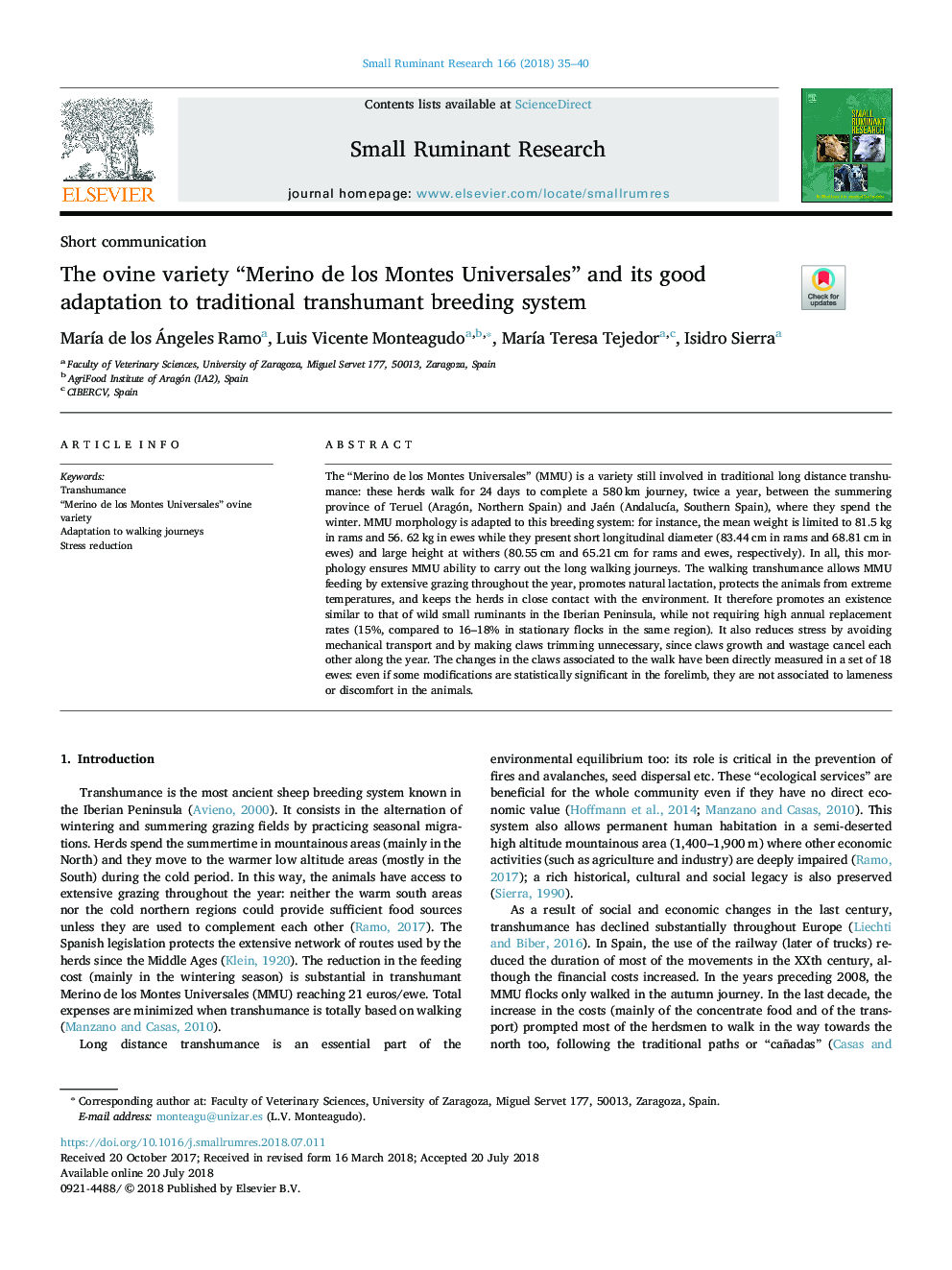| Article ID | Journal | Published Year | Pages | File Type |
|---|---|---|---|---|
| 8504135 | Small Ruminant Research | 2018 | 6 Pages |
Abstract
The “Merino de los Montes Universales” (MMU) is a variety still involved in traditional long distance transhumance: these herds walk for 24 days to complete a 580âkm journey, twice a year, between the summering province of Teruel (Aragón, Northern Spain) and Jaén (AndalucÃa, Southern Spain), where they spend the winter. MMU morphology is adapted to this breeding system: for instance, the mean weight is limited to 81.5âkg in rams and 56. 62âkg in ewes while they present short longitudinal diameter (83.44âcm in rams and 68.81âcm in ewes) and large height at withers (80.55âcm and 65.21âcm for rams and ewes, respectively). In all, this morphology ensures MMU ability to carry out the long walking journeys. The walking transhumance allows MMU feeding by extensive grazing throughout the year, promotes natural lactation, protects the animals from extreme temperatures, and keeps the herds in close contact with the environment. It therefore promotes an existence similar to that of wild small ruminants in the Iberian Peninsula, while not requiring high annual replacement rates (15%, compared to 16-18% in stationary flocks in the same region). It also reduces stress by avoiding mechanical transport and by making claws trimming unnecessary, since claws growth and wastage cancel each other along the year. The changes in the claws associated to the walk have been directly measured in a set of 18 ewes: even if some modifications are statistically significant in the forelimb, they are not associated to lameness or discomfort in the animals.
Keywords
Related Topics
Life Sciences
Agricultural and Biological Sciences
Animal Science and Zoology
Authors
MarÃa de los Ángeles Ramo, Luis Vicente Monteagudo, MarÃa Teresa Tejedor, Isidro Sierra,
